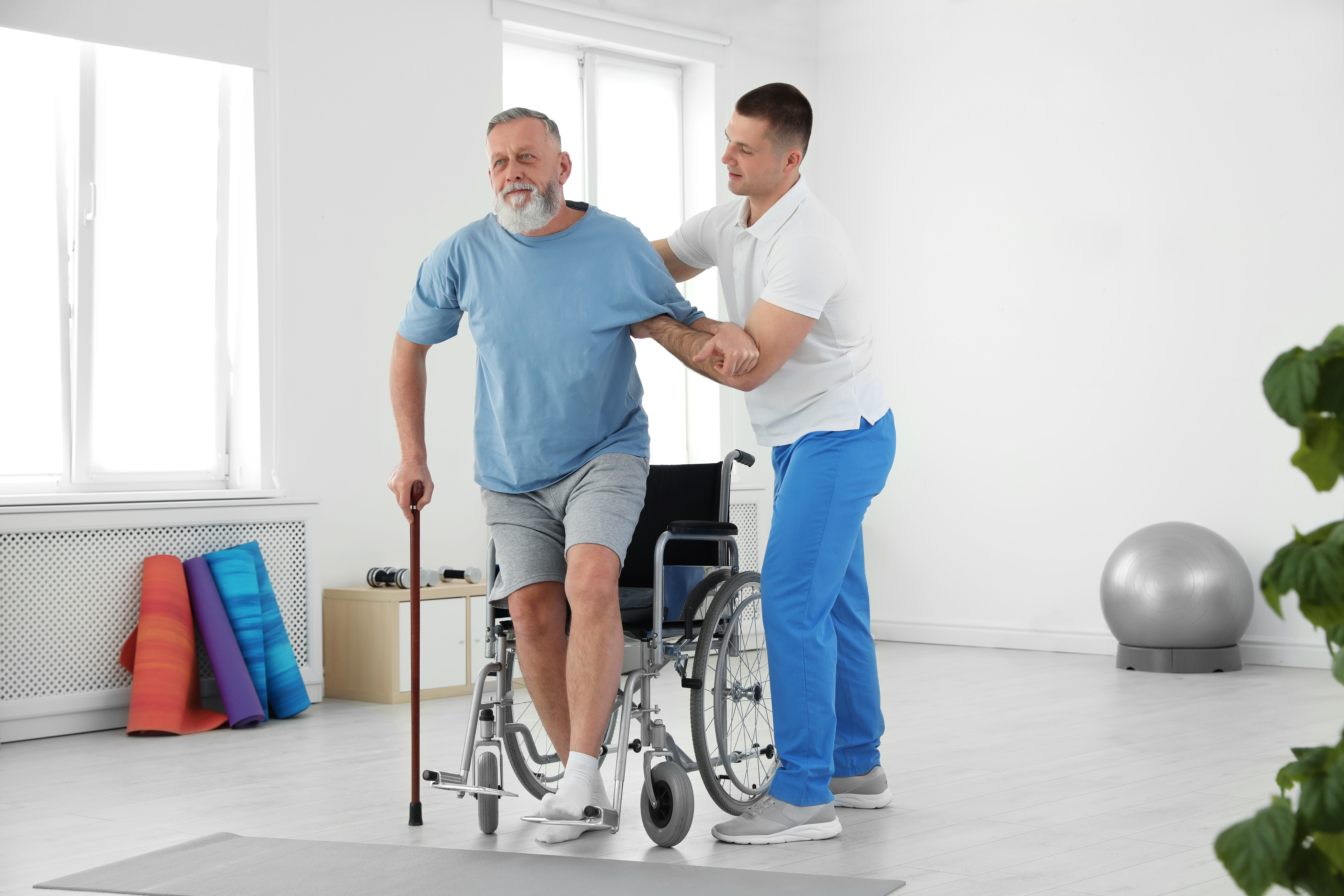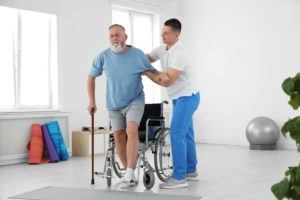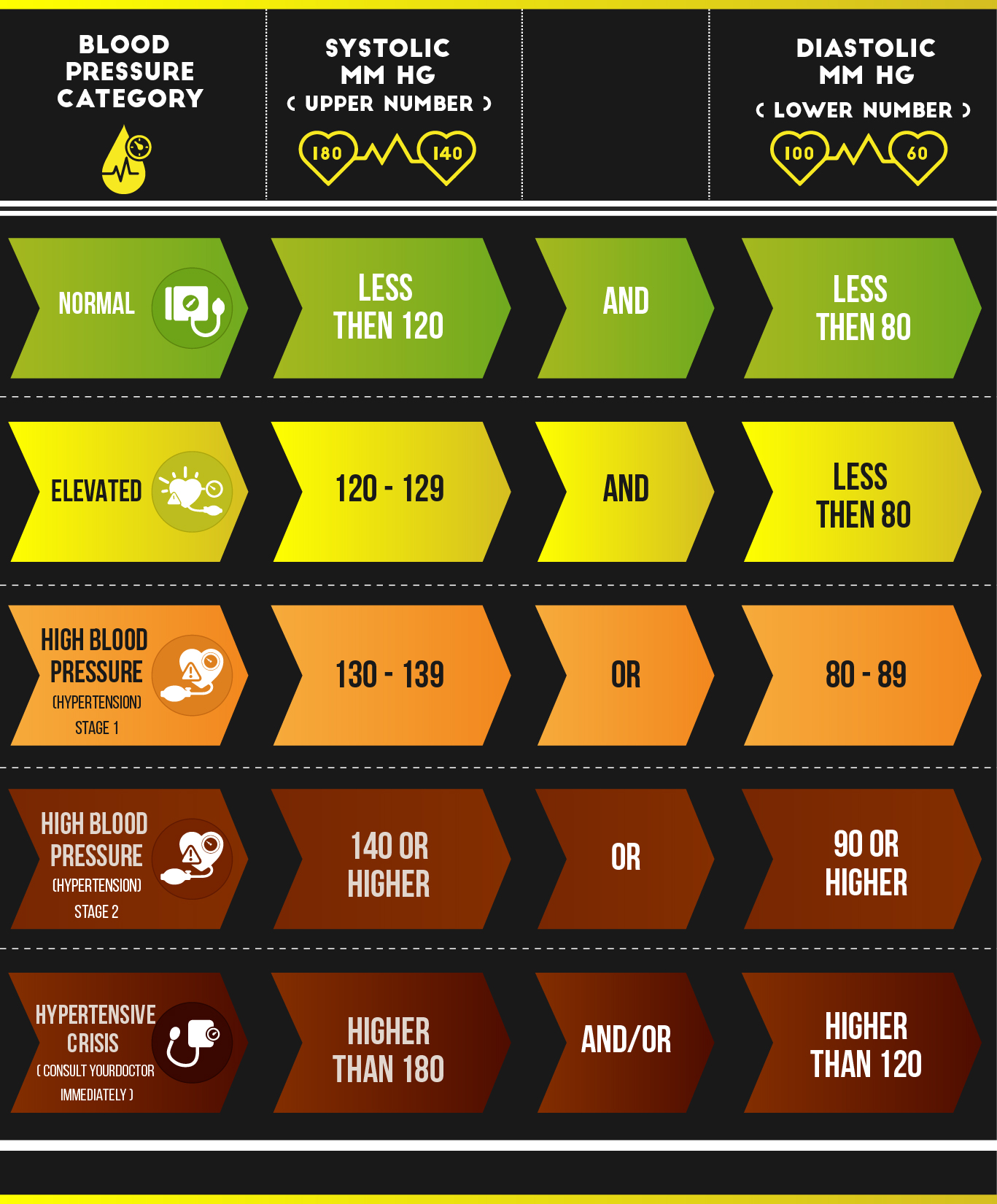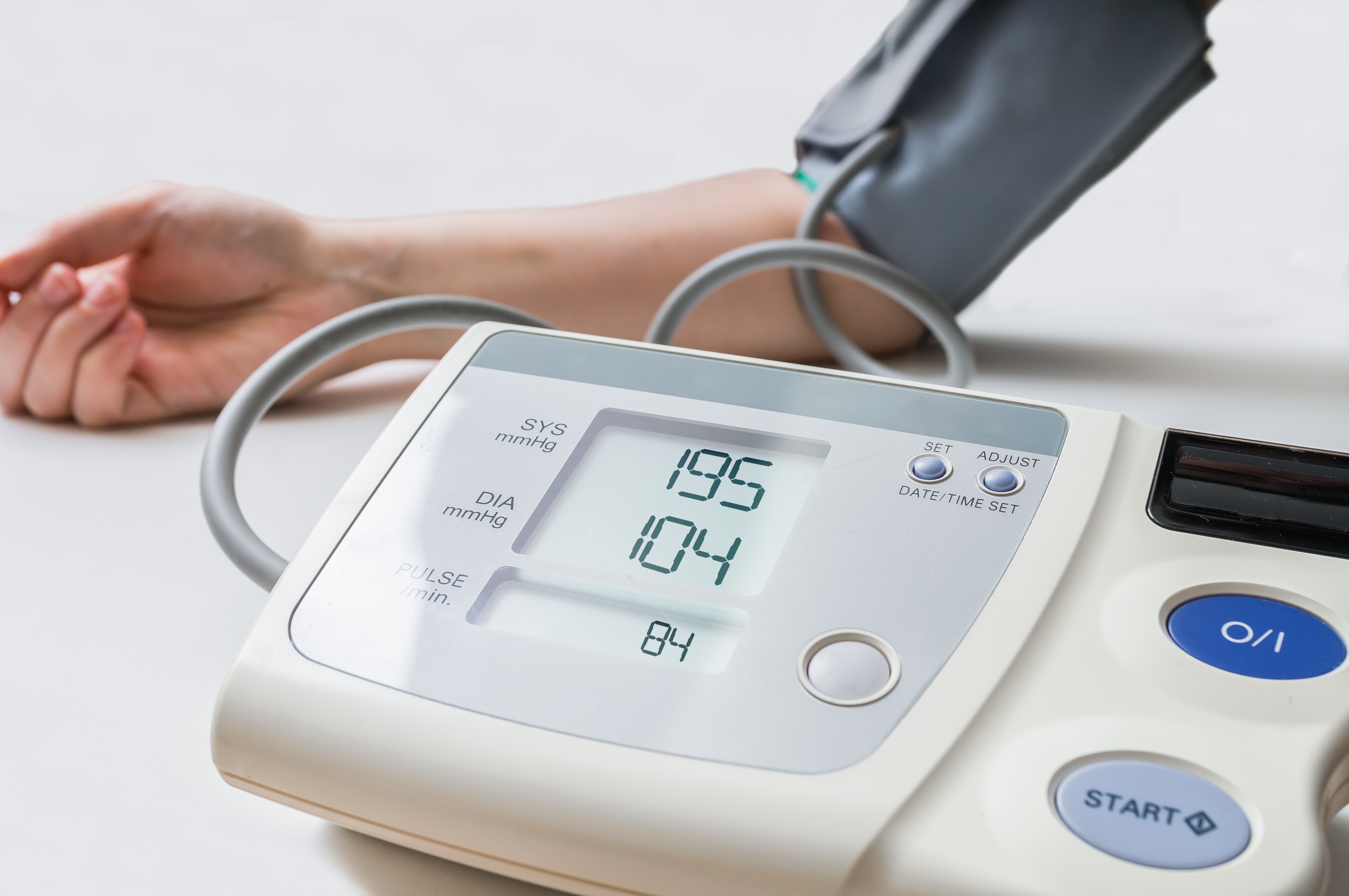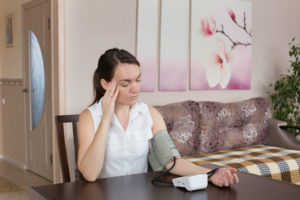Measure, Monitor, and Control Your Blood Pressure: 2020 Best Bluetooth Upper Arm Blood Pressure Monitors
Save your brain, heart, and kidneys from high blood pressure. Are you one of the 1 in 3 Americans with high blood pressure?
Statistics from the CDC show that approximately 75 million people in the US have high blood pressure, and only 54% have managed to keep the condition under control.
The main reason why our blood pressure is not below the recommended normal range is because we don’t check our blood pressure often enough. Most people only have their blood pressure checked at the doctor’s office.
Some individuals only find out about their uncontrolled high blood pressure when they have a serious event like a stroke.
Also known as Hypertension, High Blood Pressure is a deadly health condition that should be treated with the seriousness it deserves. High BP makes you vulnerable to suffering a stroke and /or heart disease, and these conditions are notorious for killing and disabling thousands of Americans annually.
Many people suffer from kidney failure and due to high blood pressure.
If you have diabetes and high blood pressure, your chances of kidney failure is very high.
Therefore you must take steps to measure, monitor and control your blood pressure.
This is where a wireless, aka as bluetooth , blood pressure monitor can help you. Whether you have an android or iphone , there is a device that is perfect for you.
But you might ask why wireless, after all there are plenty of non wireless blood pressure monitors on the market that does the same job. But not quite. There are plenty of benefits to owning a wireless device as follows:
- You will have access to your monitor anytime anywhere
- You can easily sync readings to your phone via the app
- You can store, track and trend on the app
- You can analyze your blood pressure using charts and graphs
- You can keep notes of when you take your medications and symptoms
- You will have the date and time of measurement automatically stamped
- You can easily share with whomever, wherever, whenever
- You can get reminders to take your blood pressure
- You can share the device with other users
- You can track other users blood pressure
- You can rest assure know your blood pressure is under control
Furthermore, high blood pressure has no obvious symptoms, and this means that many people who have the condition may not even be aware of their deteriorating health.
Therefore, it is important that you check your blood pressure regularly. .
Because there are so may devices on the market, it might be hard for you to choose the right one. It really depends on your situation.
One option is a smart blood pressure monitor or a blue tooth enable device. One major advantage of purchasing a smart blood pressure is the ability for all you reading to be stored and shared easily with your doctor.
Once your device is paired to the app, you will be on you way to start tracking your blood pressure.
In this article, we will guide you through some of the top Bluetooth blood pressure testing kits for home use that are available in the 2019 market. All the models we recommended have the following features:
- Irregular Heart Rate Detector
- FSA/HSA Eligible
- Bluetooth 4.0 Enable
- Upper Arm Position
- Oscillmetric Mode of Testing
- Graph, Charts, Trends
- Data Sharing
- Compatible With IOS or Android
Who is this product for?
A wireless blood pressure monitor is perfect for everyone, considering that regular monitoring of your BP is a good health practice. However, if you fall into one of the categories below, it is especially ideal for you:
- Overweight and inactive
- Eat a lot of processed food
- If you have high blood pressure and diabetes
- If your blood pressure is in the elevated range
- If you are pregnant
- If you have kidney disease
- If you have diabetes
- If you smoke
- If you are under a lot of stress
- If you have heart disease
- If you have a family history of high blood pressure
Which is the best BP Monitor type?
There are two main types of BP monitoring kits: wrist and upper arm monitors.
Wrist monitors are small, light, and portable. However, considering that they are placed on the wrist, it is not easy to get consistent results with this type of BP monitor. None of the wrist models are clinically validated.
Upper arm monitors are more consistent with results since their proper placement is at your heart level. They are more accurate compared to wrist BP monitors.
The best BP monitor type is the upper arm cuffs. This is the type that is recommended by the American Heart Association.
For some individuals, the upper arm models are hard to use. In some model,s you will need two hands to wrap the cuff around you arm the right way. The cuff should not be too tight or too loose. This task can be challenging and therefore a wrist cuff might be best. In addition, if you cannot find an arm cuff that will fit your arm then a wrist cuff might be best.
2020 Best Bluetooth Blood Pressure Monitors
[table id=4 /]
Omron 10 Series Wireless Upper Arm Pressure Monitor is one of the most accurate BP monitors currently available in the market, and that is why it is a favorite kit for many people. It is extremely easy to use considering that all you have to do is wear the adjustable upper arm cuff and press the start button.

The best thing about the Omron 10 Series Wireless Monitor is that it gives accurate results thanks to its TrueRead Advanced Averaging Technology. This exclusive technology displays the average of the last three readings taken within the last 10 minutes, giving you a more accurate picture of your heart’s health. In addition, the digital display makes it easy for you to read the results.
This home BP testing kit operates automatically, so you don’t need any training to use it, which is one of the advantages of using a smart digital BP monitor. Furthermore, Omron 10 Series Wireless Upper Arm Pressure Monitor has a cuff size range of 9-17” circumference, and once you slip the cuff around your arm; it will inflate automatically around your entire arm to give you an accurate BP reading.
It boasts of 200 memory storage, meaning it can store results of up to the last 200 readings, and it can be used by up to 2 users.
This smart, digital BP monitor does more than just read your BP level. And if your BP levels exceed internationally recognized guidelines for normal home blood pressure levels, its hypertension indicator alerts you as well.
Omron 10 Series Wireless Upper Arm Pressure Monitor is a reliable automatic blood pressure monitor to buy. It has all the features you would want in a BP home testing kit.
Omron 10 Series Wireless Best Features:
TrueRead Advanced Averaging Technology
Two user mode
Hypertension indicator
200 memory storage
#2. Best Portable BP Monitor: Lexico Smart Bluetooth BP Monitor
If you need a high-quality BP monitor that you can easily carry wherever you go and read your BP level anytime you want, then you need to check out the Lexico Smart Bluetooth BP Monitor. This smart BP monitor for home use is portable, and you can easily test your BP levels on the go and still get the most accurate results.
Lexico Health ensured that virtually all upper arm sizes are catered for with this smart medical device for at-home care. It has a cuff size circumference of 8.5-16.5”, meaning almost everyone will have an amazing and comfortable experience measuring their BP using this at-home BP monitor.
Its one-touch automated measurement process makes it extremely easy to use, and it comes with an e-book containing tips for managing blood pressure. Furthermore, Lexico custom iPhone app lets you connect wirelessly to your iOS device and track your heart health as well as share your BP results with your doctor or close friends.
Lexico Smart Bluetooth BP Monitor is FDA approved, and it comes with warranty. It is also extremely affordable and you won’t have to dig a hole in your pocket to afford this effective smart Bluetooth BP medical kit.
Lexico Smart Bluetooth BP Monitor Best Features:
- Portable
- E-book with tips for managing blood pressure
- Affordable
- Comfortable cuff size range
#3. Best Multi-User BP Monitor: 1byOne Bluetooth Super Smart BP Monitor
Most at-home BP monitors are 2-user mode, meaning they can store and track BP readings of a maximum of two individuals only. Does this mean that if you have a large family you will have to buy more than one BP monitor? Not when 1byOne Bluetooth Super Smart BP Monitor is available in the mar
 ket!
ket!
1 By One, the makers of the 1byOne Bluetooth Super Smart BP Monitor designed it to not only provide you with an effective BP monitoring at-home kit, but also to help you save money. This super smart BP monitor lets you add as many family members and track their BP through their free custom 1byOne Health App. Instead of having one BP monitor kit for every 2 members of your family, you can use one 1byOne Bluetooth Super Smart BP Monitor for everyone in the family.
In addition, it has enough space to automatically store your lifetime BP data as well as generate weekly, monthly, or yearly charts for you to track your health. This super smart kit gives accurate results every time.
It also has a 4.7” display screen, which is large and incredibly easy to read. In addition, its upper arm cuffs, which boast a size of 16.5”, are ideal for comfortable wearing during BP monitoring and are perfect for the American body. If you have large upper arms, these cuffs will provide you the most comfortable BP measuring experience since they will fit comfortably to take your BP measurements.
1byOne Bluetooth Super Smart BP Monitor Best Features:
- Unlimited multi-users
- Comfortable cuff size for large American body
- Unlimited storage space for BP data
- Large display screen
- 2-year quality warranty
#4. Best Dual Mobile Platform Connectivity BP Monitor: FORA Wireless Bluetooth BP Monitor
Many BP monitors for home use are compatible either with iOS or Android, but FORA have designed a smart home testing kit with dual mobile platform connectivity.
The FORA Wireless Bluetooth BP Monitor can easily connect wirelessly via Bluetooth to both Android and iOS devices, giving you a smooth BP monitoring process.
With its free custom iFORA BP tracking app, you can upload your BP data and share it easily on Facebook or by Email with your loved ones or doctor.


It is not only easy to use, but the LCD Backlight Display codes your BP results by colors so you can interpret and understand the results easily. And if you want to view your results in chart form, all you have to do is tilt your Smartphone in a landscape orientation. It is that easy!

In addition, FORA Wireless Bluetooth BP Monitor has adjustable cuffs that allow for comfortable BP measuring. And it has 200 reading memory, which means you will have all the data you need to track your heart’s health.
Moreover, this smart BP monitor for home use is compact enough, making it portable. You can check your BP levels from anywhere you like, be it your home, your office, or even in the comfort of your own car.
And if you’re forgetful, chances are you may fail to switch it off after use thereby wasting the battery. If that is the case, you will be glad to know that the FORA Wireless Bluetooth BP Monitor for home use has automatic power off system that shuts it down when the kit is idle for 3 minutes.
FORA Wireless Bluetooth BP Monitor Best Features:
- Dual mobile platform connectivity
- LCD Backlight Display
- Portable
- Automatic Power off System
#5. Best Fast Reading BP Monitor: Welch 1700 Series BP Monitor
Imagine getting your BP readings within 20 seconds tops! That is exactly the time it takes for the Welch 1700 Series BP Monitor home kit to measure your blood pressure. On average, BP monitors take approximately 40seconds to 1 minute to complete the process. However, that time has been cut by 50% with the super smart Welch 1700 Series BP monitor.
 And it does not just allow for fast BP reading, it also provides for an easy one-touch BP measuring process. Just wear the adjustable cuffs and press a button to get the process started. The cuffs will inflate automatically.The Welch 1700 Series BP Monitor home kit does not compromise accuracy with the fast process. It incorporates SureBP technology that guarantees accurate BP reading every time. You can be sure that with this home BP monitor, you will get fast accurate results always.
And it does not just allow for fast BP reading, it also provides for an easy one-touch BP measuring process. Just wear the adjustable cuffs and press a button to get the process started. The cuffs will inflate automatically.The Welch 1700 Series BP Monitor home kit does not compromise accuracy with the fast process. It incorporates SureBP technology that guarantees accurate BP reading every time. You can be sure that with this home BP monitor, you will get fast accurate results always.
And you don’t have to worry about cuff size, because not only does it provide the standard cuff size of 8.7-16.5” circumference, but it also offers you the option to buy the extra small cuff size of 5.9-6.4” and extra large cuff size of 15.7-21.2”. All upper arm sizes are catered for with this at-home Welch 1700 Series BP Monitor home kit.
You can connect wirelessly to your Smartphone via Bluetooth and manage your BP data including sharing it with loved ones and doctor using its free Smartphone app.
Welch 1700 Series BP Monitor Best Features:
- One-touch easy to use process
- Incorporate SureBP for accurate reading
- Comfortable upper arm cuff size
- Bluetooth connectivity
#6. Best Long Battery Life BP Monitor: QardioArm Smart BP Monitor
If you travel regularly and still want to keep track of your heart’s health, you need a BP monitor that is portable, easy to use, and more importantly, has a long battery life. The BP monitor that has all these features is the QardioArm Smart BP Monitor by Qardio.
 The QardioArm Smart BP Monitor has a sleek design, is very light and portable, and its battery life can last for up to a year with frequent use. You can carry it wherever you go and use it to check your BP levels from anywhere.
The QardioArm Smart BP Monitor has a sleek design, is very light and portable, and its battery life can last for up to a year with frequent use. You can carry it wherever you go and use it to check your BP levels from anywhere.
And if you have large upper arms, then you will be glad to know that the QardioArm Smart BP Monitor has adjustable cuffs of size 8.7-14.6” circumference, and this provides for comfortable BP checking with the home kit.
It is also easy to set up. It connects wirelessly to your Smartphone via Bluetooth. Your device must run on iOS 10 or later, or Android 5 or later. It is compatible with Android Wear and Apple Watch. In addition, it allows you to upload, store, track, and share your BP data with your doctor of close relatives through the app.
The QardioArm Smart BP Monitor does more than just measuring your BP levels. It also detects irregular heartbeats, and this could help you arrest cardiovascular disease before your health deteriorates.
The QardioArm Smart BP Monitor is a good and reliable home BP monitor, especially if you’re obese. Its adjustable cuffs provide comfortable BP testing, and it is easy to use.
QardioArm Smart BP Monitor Best Features:
- Adjustable upper arm cuffs
- Smart design
- Secure data management
- BP data share
- Long battery life
If your blood pressure easily gets out of control,, then you are at great risk for stroke and heart disease, and that is why you need a home kit for checking your BP levels. The best kit for you should not just measure your BP levels, it should also be able to check for irregular heartbeats and warn you accordingly. This way, you will be able to detect any heart rhythm and consult your doctor to initiate the best treatment.

 Beurer Bluetooth BP Monitor is a reliable home kit worth checking out. It can detect heart rhythm disturbances and use colored risk indicators to notify you. With the colored risk indicator, you can easily read and interpret the results.
Beurer Bluetooth BP Monitor is a reliable home kit worth checking out. It can detect heart rhythm disturbances and use colored risk indicators to notify you. With the colored risk indicator, you can easily read and interpret the results.
In addition, Beurer Bluetooth BP Monitor displays the systolic & diastolic pressures and pulse measurements on an extra large blue illuminated LCD display, making it easy for you to read the results. With this home kit, you won’t need any glasses to read your BP results.
And if you’re worried about comfort when checking your BP levels, then it will please you to know that the Beurer Bluetooth BP Monitor cuffs have a 8.7-17.3” circumference, and these can comfortably fit the upper arms of those with huge upper arm sizes.
Another good thing about this particular home kit is that it allows for multiple users. With 120 memory storage, it can store results of up to 4 individuals and record up to 30 readings per person. You can manage this data effectively through the Smartphone app once you connect the Beurer Bluetooth BP Monitor wirelessly to your phone via Bluetooth.
This particular BP home kit monitor is a good option to consider buying, because it has virtually all the features you would want in an automatic Bluetooth BP monitor.
Beurer Bluetooth BP Monitor Best Features:
- Colored risk indicator
- Adjustable upper arm cuffs
- Extra large display screen
- 4-user mode
- 120 memory storage
#8. Best Comprehensive Heart Health Monitoring BP Monitor: MobileHealth Bluetooth BP Monitor
If you are extremely health conscious, or are at a great risk for stroke or heart disease, you will want a home BP monitor that checks for more than just the usual systolic and diastolic pressures. Especially those who are obese, the best BP monitor home kit should check for fast heart beat, slow heart beat, irregular heartbeat, atrial fibrillation, and cardiovascular evaluation. The MobileHealth Bluetooth BP Monitor check for all the above.

 Furthermore, with MobileHealth Bluetooth BP Monitor that provides for wireless connection to your Smartphone via Bluetooth, you will be able to record, store, and share an unlimited number of readings on your phone to help you track your heart’s health. The kit can however store only the last 200 readings. It is compatible with both Android and iOS devices.
Furthermore, with MobileHealth Bluetooth BP Monitor that provides for wireless connection to your Smartphone via Bluetooth, you will be able to record, store, and share an unlimited number of readings on your phone to help you track your heart’s health. The kit can however store only the last 200 readings. It is compatible with both Android and iOS devices.
In addition, its triple measurement averaging ensures accurate reading of your BP levels. You can also view averages on a weekly, biweekly, and monthly basis. And you can easily read the results on its extra large display screen
#9. Best BP Monitor with VIP Customer Service: GreaterGoods Smart Upper Arm Bluetooth BP Monitor
When it comes to consumer healthcare tools such as the BP monitors for home use, you can never ignore the importance of great customer service. You might have many questions about the product, such as how to use the kits properly and get the best results, and you’d appreciate if all your queries are answered promptly and satisfactorily. Therefore, we recommend you focus on products that are backed by great customer service to give you the best user experience.
One such product is the Greater Goods Smart Upper Arm Bluetooth Blood Pressure Monitor that comes with professional customer care service to give you all the support you need. With this particular model, you get video tutorials on how best to use the kit to measure your BP at home.
In addition, they have a knowledgeable support team that is available around the clock and will give you genuine answers to all your questions. Any time something goes wrong with your BP monitor, the support team will be available to make it right in a way that works best for you.
VIP customer service is not the only thing that makes Greater Goods Smart Upper Arm Bluetooth Blood Pressure Monitor a great tool to have at home. The device is thoughtfully designed to give you highly accurate results and makes it easy for you to read and interpret the readings by displaying them on a large, backlit LCD screen with oversized numbers. Also, it can support 2 users, each with 60 memory storage.
Furthermore, the ability of Greater Goods Smart Upper Arm Bluetooth Blood Pressure Monitor to sync results to the device of your choice via BT Smart Technology makes it easy for you to keep track of your blood pressure at home. This effective home kit measures your systolic and diastolic pressures, sends the readings to the Balance Health app, where you can store, manage and even share the healthy averages with your doctor. It is compatible with most recent Android phones and Apple devices running iOS 7.1 or later. And yes, it integrates with Apple Health.
Greater Goods Smart Upper Arm Bluetooth Blood Pressure Monitor Best Features:
- Hypertension Indicator and Irregular Heartbeat detector
- Compatible with Android and iOS
- BT SMart Technology
- FDA Cleared
- Great Customer Service
#10. Best BP Monitor with Dual Screen: OMRON Platinum Wireless Blood Pressure Monitor Upper Arm Cuff
To effectively monitor and manage your blood pressure, you need a BP monitor that allows you to compare the current reading to the previous reading so you can have a clear picture of how your heart is fairing. That feature is available exclusively on OMRON Platinum Wireless Blood Pressure Monitor Upper Arm Cuff, and that is what makes this particular model attractive to many health-conscious individuals.
Not only is it a trusted brand, but it also features a backlit dual-display LCD monitor with easy navigation. You can easily compare the current reading to the previous reading, which makes it easy for you to read and interpret the results. Therefore, with OMRON Platinum Wireless Blood Pressure Monitor Upper Arm Cuff you will better understand the immediate state of your heart.
This BP monitor accepts 2 users just like other models by OMRON. However, this particular product can store 200 total blood pressure readings for 2 users, each with 100 readings storage memory, and this is the most per user of any OMRON BP monitor. Mind you, users are unlimited with the custom OMRON Connect free app that also works with Amazon Alexa-enabled gadgets on select iOS and Android devices.
With the OMRON Connect app, you can easily track your readings and even mail your records to your doctor.
Another unique feature of OMRON Platinum Wireless Blood Pressure Monitor Upper Arm Cuff is the high morning average indicator, which is only available on the gold and Platinum OMRON monitors. How this particular feature works is quite simple, yet amazing. It lets you know if your systolic and diastolic pressures exceed the normal range in the morning when there is usually a high risk of stroke or heart attack.
The OMRON Platinum Wireless Blood Pressure Monitor Upper Arm Cuff is easy to use and it is highly accurate, making it one of the most reliable blood pressure monitors for home use. It also comes with a 6-year warranty, which is also the longest warranty of any OMRON monitor.
OMRON Platinum Wireless Blood Pressure Monitor Upper Arm Cuff Best Features:
High morning average indicator
6-year warranty
Dual Screen Display with Backlight
2-user mode with 200 total blood pressure readings storage memory
#11 Best BP Monitor without Tubes or Wires: OMRON Evolv Bluetooth Wireless Upper Arm Blood Pressure Monitor
Forget the tubes and wires that are a common feature in most blood pressure monitors for home use, OMRON has created a compact one-piece design that is sure to take the portability of upper arm monitors to the next level! If you want that blood pressure kit that is compact and portable, then you need to check out the OMRON Evolv Bluetooth Wireless Upper Arm Blood Pressure Monitor.
It features compact, simple and intuitive controls, making it one of the easiest to use blood pressure home testing kits available in the market. By doing away with the tubes and wires, OMRON combined the effectiveness of its advanced accuracy technology with its exclusive heart health algorithm. The result is an innovative upper arm blood pressure monitor that checks for more data points and eliminates interference from movement during measurement. Therefore, with this model, you are guaranteed to get clinically accurate readings each and every time you measure your blood pressure at home. It also makes the kit highly portable, meaning you can take it with you and keep track of your blood pressure levels from anywhere and at any time.
Just like other OMRON BP monitors, the OMRON Evolv Bluetooth Wireless Upper Arm Blood Pressure Monitor is Bluetooth-enabled and allows you to connect to your smart device using the OMRON Connect App. With this app, you can transmit, track and share results of your daily measurements, including the systolic, diastolic, pulse rate, and irregular heartbeat data on your smartphone.
Furthermore, it comes with pre-formed cuffs that are comfortable to wear, and these fit around the standard and larger arms of 9” to 17” in circumference. The advantage of pre-formed cuffs is that you only have to slide your arm in and tighten, which is quite easy to do.
Buy this BP home testing kit if you want a blood pressure kit that is compact and portable. You won’t be disappointed, because it has all the features any effective blood pressure monitor would have.
OMRON Evolv Bluetooth Wireless Upper Arm Blood Pressure Monitor Best Features:
- Trusted Brand
- Compact design
- Clinically Accurate results
- Portable BP monitor
- Pre-formed cuffs
- Compatible with Alexa-enable Devices
#12. Best BP Monitor with Pre-Formed Cuffs: OMRON Silver Bluetooth Upper Arm Blood Pressure Monitor
If you want minimal struggle when wearing a blood pressure monitor on your upper arm to take measurements of your blood pressure, you may want to consider buying BP monitors with pre-formed cuffs, such as the OMRON Silver Bluetooth Upper Arm Blood Pressure Monitor.
Unlike regular cuffs, pre-formed cuffs are easy to use. All you have to do is slide your arm in the cuffs and tighten them. With OMRON Silver Bluetooth Upper Arm Blood Pressure Monitor, the easy-wrap cuffs will inflate 360 degrees around your arm, and this will reduce measurement errors. This particular model comfortably fits adult arms ranging from 9” to 17” in circumference. Therefore, not only will you have an easy time wearing the cuffs, but the results you get will be highly accurate.
Being a trusted brand, OMRON Silver Bluetooth Upper Arm Blood Pressure Monitor is clinically approved. Furthermore, with its Advanced Accuracy technology, you will always get precise and consistent blood pressure readings.
The Bluetooth-enabled OMRON Silver Bluetooth Upper Arm Blood Pressure Monitor can store 80 total blood pressure readings for 1 user. This memory storage is a bit low compared to other OMRON BP monitors such as the OMRON Platinum Wireless Blood Pressure Monitor Upper Arm Cuff that boasts of 200 readings storage memory. However, if you use the OMRON Connect free app, you can enjoy unlimited memory and users with the OMRON Silver Bluetooth Upper Arm Blood Pressure Monitor. The app is compatible with Alexa-enabled devices on select Android and iOS devices.
It is also worth mentioning that the OMRON Silver Bluetooth Upper Arm Blood Pressure Monitor comes with a 3-year warranty. This is a testament of the trust OMRON have on the quality and longevity of their products. Acquiring this model to check your blood pressure at home would be an incredible investment, especially if you are a health-conscious person.
OMRON Silver Bluetooth Upper Arm Blood Pressure Monitor Best Features:
Trusted Brand
3-year warranty
Comfortable pre-formed cuffs
Clinically Approved
Easy to use
#13 Best BP Monitor with Dock Design for Smartphone: iHealth Ease Upper Arm Bluetooth Blood Pressure Monitor
While most blood pressure monitors for home use provide seamless connection to your smartphone via Bluetooth, most of them lack a critical feature: a dock design for your smartphone. Well, iHealth took this factor into consideration and they developed an amazing blood pressure kit that converts your smartphone into a powerful, medically approved blood pressure monitor you can easily use at home or in your office. If this tickles your fancy, then there’s no need to think twice about purchasing the iHealth Ease Upper Arm Bluetooth Blood Pressure Monitor.
Think about this: the iHealth Ease Upper Arm Bluetooth Blood Pressure Monitor lets you use your smartphone and the iHealth Blood Pressure Dock to measure your blood pressure! And it is extremely easy to use. All you have to do is wear the cuffs correctly, launch the app and automatically connect, press the START button and begin testing. The results will be displayed instantly once testing is complete.
The cuffs of iHealth Ease Upper Arm Bluetooth Blood Pressure Monitor can comfortably fit upper arms with a circumference of 8.7” to 14.2”, and it takes an accurate measurement of your blood pressure, heartbeat, pulse wave and also detects Arrhythmia. This amazing BP monitor captures all these readings within 20-30 seconds while the cuffs inflate, which saves you a lot of time. And since the kit is medically accuracy approved, you can always trust it to give you accurate readings every time.
Furthermore, the iHealth Ease Upper Arm Bluetooth Blood Pressure Monitor uses a single charge to provide around 500 times testing, and this makes it a good kit to travel with. It uses a micro USB cable to charge.
iHealth Ease Upper Arm Bluetooth Blood Pressure Monitor is that home testing kit that provides you with reliable blood pressure readings anytime, anywhere, and more importantly, accurately. This is a great kit to have in your home or office to check your blood pressure.
iHealth Ease Upper Arm Bluetooth Blood Pressure Monitor Best Feature:
- Medically approved and FDA validated
- Fast and accurate reading
- Provide comprehensive reading
- Easy to use
- Bluetooth connectivity
Many blood pressure kits for home use usually have a large LCD screen for displaying results, but this feature makes the BP kits appear bulky. If you’re somewhat put off by the bulkiness of such displays, you will be glad to know about this amazing option that lets you measure your blood pressure without the bulky display: the iHealth Feel Upper Arm Bluetooth Blood Pressure Monitor.It works similar to the iHealth Ease Upper Arm Bluetooth Blood Pressure Monitor, where you apply the upper arm cuffs and you press the Start button to begin testing. Results are displayed on your smartphone. The only difference between the two models is that one has a dock design for your smartphone, while iHealth Feel Upper Arm Bluetooth Blood Pressure Monitor does not. You simply connect the monitor to your smartphone via Bluetooth and all your readings will be synced automatically. You can then view your results on your smartphone.
iHealth Feel Upper Arm Bluetooth Blood Pressure Monitor Best Features:
Because it is not bulky, you can easily travel with it and take measurements of your blood pressure anytime and anywhere. In fact, its battery can last you around 80 tests with a single charge. Even though it is not as powerful as iHealth Ease Upper Arm Bluetooth Blood Pressure Monitor which can last you around 200 blood pressure tests with a single charge, the iHealth Feel Upper Arm Bluetooth Blood Pressure Monitor is still extremely effective. It is a good option to consider buying to use at home to check your blood pressure.
This amazing innovation from iHealth eliminates the need for bulky display and still provides medically accurate readings. Yes, it is FDA validated and medically accuracy approved. With iHealth Feel Upper Arm Bluetooth Blood Pressure Monitor, you simply use the iHealth MyVitals app to check your results. The app allows you to share the overall picture of your health with your doctor or family members, considering that you can easily export the blood pressure data as an Excel, PDF, or CSV file.
#14 Best BP Monitor without Bulky Display: iHealth Feel Upper Arm Bluetooth Blood Pressure Monitor
- Eliminates the need for bulky display
- Bluetooth connectivity
- Medically approved and FDA validated
- Powerful battery
When shopping for blood pressure monitors to buy for use at home, you’ll want those monitors that can be used anywhere and anytime. And you’re not limiting the use of the kit to just within your home; you may have to travel around and this would require you to bring the BP monitor with you everywhere you go. As such, you’ll want a product that has a powerful rechargeable battery to guarantee availability each and every time you need to measure your blood pressure.Withings BPM Connect Upper Arm Blood Pressure Monitor is FDA cleared; meaning the accuracy of the results is unquestionable. Also, the results are provided instantly once the testing is complete.If you travel frequently and need assurance that you will be able to monitor your blood pressure, the powerful rechargeable battery makes the Withings BPM Connect Upper Arm Blood Pressure Monitor an ideal blood pressure kit to buy. Think about it: with only one charge, you will be sorted for the next six months!
Withings BPM Connect Upper Arm Blood Pressure Monitor Best Features:
What is more, you get unlimited data storage and unlimited access to your blood pressure data through the Health Mate app on your smartphone. Yes, Withings BPM Connect Upper Arm Blood Pressure Monitor provides for seamless connection to your smartphone through Wi-fi or Bluetooth. However, the sharing option is only available on iOS devices, but Android users will also get to enjoy this feature soon enough since the update for the Android version is in the pipeline.
The best BP monitor with powerful rechargeable battery is the Withings BPM Connect Upper Arm Blood Pressure Monitor. Imagine, with only one charge, this blood pressure monitor can give you up to six (6) months of use! Once you charge the battery using a micro USB cable, you are assured of measuring your systolic and diastolic pressures plus your heart rate for the next 6 months before the next recharge is due. Talk of convenience!
#15 Best BP Monitor with Powerful Rechargeable Battery: Withings BPM Connect Smart Upper Arm Blood Pressure Monitor
- A powerful rechargeable battery that can last up to 6 months with one charge
- Medically accurate and FDA cleared
- Wi-Fi and Bluetooth connectivity
- Unlimited data storage
Sometimes you want more than just accurate measurement; you also want a comfortable experience when measuring your blood pressure. If that is the case, then you need a BP monitor that uses gentle inflation to make the experience as comfortable as possible. A&D Medical Upper Arm Bluetooth Blood Pressure Monitor is the best candidate for this category.
A&D Medical Upper Arm Bluetooth Blood Pressure Monitor is clinically validated, and the accuracy of its results meets the international standards of the European Society of Hypertension. You can never go wrong with this blood pressure home testing kit because the results it gives you are highly accurate. It measures your systolic and diastolic pressures, as well as, check for any irregular heart beat. The A&D Medical Upper Arm Bluetooth Blood Pressure Monitor is a good option to consider buying considering that it provides not just accurate readings but also a nice soothing experience. If you want a comfortable blood pressure measuring experience, this monitor would be ideal for you.
A&D Medical Upper Arm Bluetooth Blood Pressure Monitor Best Features:
Managing your blood pressure data is made easier with A&D Medical Upper Arm Bluetooth Blood Pressure Monitor since it has the A&D Connect app that connects to your smartphone via Bluetooth. The app is available for Android and iOS. It syncs your readings on your phone allowing you to interpret the results easily. Yes, you can view graphs/trends in your dashboard. In addition, the app provides a convenient and secure way for you to share your blood pressure records with your doctor or close family members.
If you have upper arms with a circumference range of between 9” and 14.6”, then the medium cuffs of A&D Medical Upper Arm Bluetooth Blood Pressure Monitor will fit your perfectly and comfortably. Once wrapped around your arm, the device will inflate gently giving you the most soothing and relaxing experience. And it is extremely easy to use. It features automatic one-button operation, meaning you can start the process by pressing a button only once.
#16 Best BP Monitor with Gentle Inflation for Comfortable Experience: A&D Medical Upper Arm Bluetooth Blood Pressure Monitor
- Gentle inflation for a comfortable experience
- Bluetooth connectivity
- Clinically validated
- Accurate readings
- Irregular Heartbeat Detector
Bluetooth Blood Pressure Monitor Buying Guide
When buying a Bluetooth BP monitor for home use, there are some important factors you need to consider. There are many models currently available in the market, meaning you’ll be spoilt for choice. However, if you consider the following factors, you will make the right purchasing decision.
The cuff size range
Upper arm BP monitors require a cuff to measure blood pressure and give you accurate results.
The size of most cuffs is adjustable, but even so, you need to ensure that the model you go for fits your arm properly as this will determine the accuracy of the results you get. Too large cuff will give a false low reading and too tight cuff will give a too high reading.
Therefore, for the most accurate results, ensure that the cuff size of the upper arm monitor is not too large or too small, but fits you just right.
The cuff should be snug. Not tight. Not loose. You should be able to slide your finger under the cuff. However, there should not be any space between you skin and finger and finger and cuff.
Complete Reading
For effective tracking of your blood pressure levels, you need a monitor that reads both the systolic and diastolic pressure.
In measuring blood pressure, you need to know the force exerted on the walls of your arteries by the blood when the heart beats. This force is known as the systolic pressure.
You also need to know the amount of pressure exerted between heartbeats, and this is what we call the diastolic pressure.
It is important to know these measurements because they can tell you if your health is deteriorating. For instance, if you have an elevated systolic pressure, it could point to signs of cardiovascular disease.
So, when shopping for Bluetooth blood pressure monitors, limit your search to those that give complete readings, including the systolic and diastolic pressure.
Features of the kit
For the best investment, ensure that the model you buy has the special features you want in a Bluetooth blood pressure monitor.
Different models have different features, so you need to identify those models that have the right features for your needs.
There are some models that offer basic BP readings while others can do more, such as tracking and graphing your data, time-stamping features, Bluetooth connection to your Smartphone, and others can even accommodate more than one user.
Ease of Operation
The ease of operation is an important factor to consider when investing in a Bluetooth BP monitor kit for at-home use.
Some BP monitors are easy to set up and use while others are complex. It is wise to limit your buying options only to those that are easy to use. You wouldn’t want to buy wireless BP monitors that make it difficult for you to use or interpret the results, would you?
Manual or automatic?
Some BP monitors operate manually, requiring you to pump it by hand, while others operate automatically by just a press of a button.
For you to use the manual BP monitors, you need proper training. However, anyone can use the automatic BP monitors because all you need to do is press a button.
Cost
The price of the Bluetooth BP monitor should be reasonable. If you are working with a budget, find one that fits the budget but still has all the features you want in a BP home testing kit.
It is important to consider these factors to help you make the best buying decision for the best blood pressure monitors for home use.
Calibration
Calibration of the device is a must. As you notice some of the devices are not clinically validated. Therefore, you might be wondering if you should purchase a device that is not clinically validated. In my opinion I think you should. However, regardless of whether is clinically validated or not you should have it calibrated.
The manual should come calibration instruction. But the most important thing you should do with your device is to take it with you to your doctor’s appoint so they can show how the right way to take your blood pressure and make sure the cuff is the right size. Furthermore, the should compare the measurements obtained using your device and the measurement using their device.
There should no more than 5mmhg difference in difference.
If there is a difference then you should consider returning the monitor. You do not want use a monitor that is giving wrong results. That being said, be mindful of the return policy of the retailer and save the package.
Final Advice
We’ve listed top 10 of the best wireless blood pressure monitors for home use. The goal is to have purchase a monitor that you can use with ease. Taking your own blood pressure should not disrupt your life. Therefore , the device you select should be one that you can seamlessly include in you every day ritual


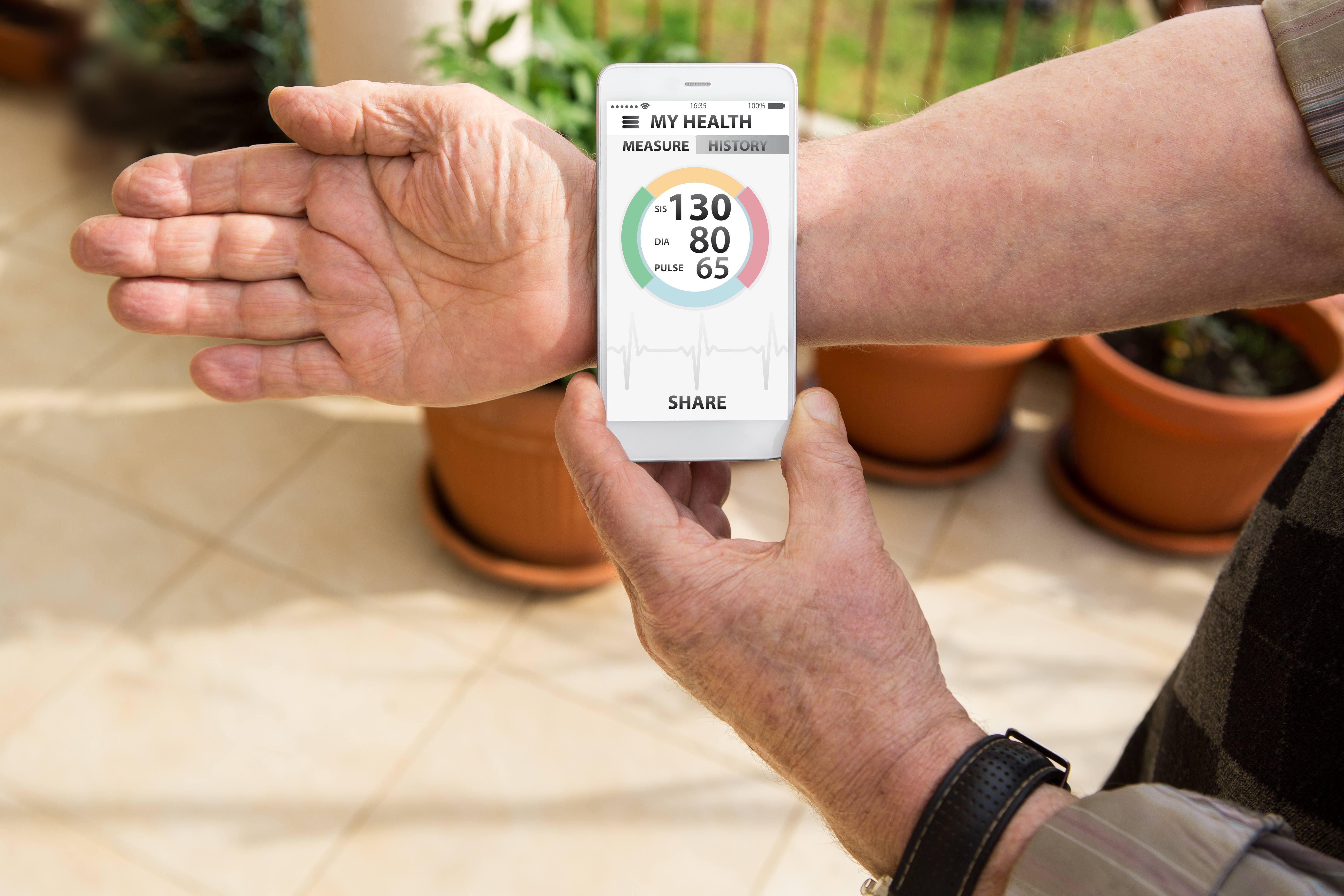



 And it does not just allow for fast BP reading, it also provides for an easy one-touch BP measuring process. Just wear the adjustable cuffs and press a button to get the process started. The cuffs will inflate automatically.The Welch 1700 Series BP Monitor home kit does not compromise accuracy with the fast process. It incorporates SureBP technology that guarantees accurate BP reading every time. You can be sure that with this home BP monitor, you will get fast accurate results always.
And it does not just allow for fast BP reading, it also provides for an easy one-touch BP measuring process. Just wear the adjustable cuffs and press a button to get the process started. The cuffs will inflate automatically.The Welch 1700 Series BP Monitor home kit does not compromise accuracy with the fast process. It incorporates SureBP technology that guarantees accurate BP reading every time. You can be sure that with this home BP monitor, you will get fast accurate results always. The QardioArm Smart BP Monitor has a sleek design, is very light and portable, and its battery life can last for up to a year with frequent use. You can carry it wherever you go and use it to check your BP levels from anywhere.
The QardioArm Smart BP Monitor has a sleek design, is very light and portable, and its battery life can last for up to a year with frequent use. You can carry it wherever you go and use it to check your BP levels from anywhere.



